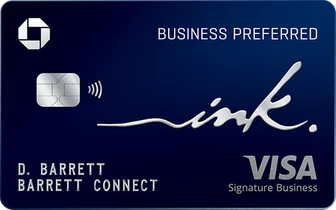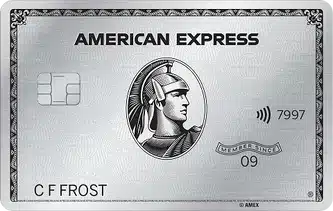This post contains references to products from one or more of our advertisers. We may receive compensation when you click on links to those products. For an explanation of our Advertising Disclosure, visit this page.
It’s common for households to have multiple credit cards to build a credit history and maximize their rewards on retail and travel purchases. If you add a new credit card periodically, you might be wondering if having 7 credit cards is too many. Well, let’s see how many credit cards most Americans have.
Terms apply to American Express benefits and offers. Enrollment may be required for select American Express benefits and offers. Visit americanexpress.com to learn more.
Average Number of Credit Cards
A 2021 Consumer Financial Protection Bureau (CFPB) study finds that the average person had 3.8 cards in 2020. This number is consistent with other independent surveys going back to 2000 which fluctuates between 3 and 4 cards.
So, if you ask, “How many credit cards are too many?” just off of public research, having 7 credit cards at once might be a little excessive.
However, there are not many hard-fast rules when it comes to determining how many cards should be in a person’s wallet or what type of credit card they should be.
Having an above-average number of credit cards can offer several benefits when you follow these practices.
Diversify Your Credit Card Rewards
Any person of legal age can apply for rewards credit cards, store charge cards, secured credit cards, etc. But as your credit card portfolio grows, you should make sure your benefits don’t conflict or have too much overlap.
Here are some credit card strategies to consider.
Focus On One Rewards Program
General rewards programs like Chase Ultimate Rewards® or American Express Membership Rewards® offer several cards to earn points.
You may have at least two cards with different bonus categories and card benefits. More importantly, you can combine your balances and potentially get a redemption bonus.
Here are two credit card combos you might consider.
For earning the most Chase Ultimate Rewards:
- Chase Sapphire Preferred® Card: Earn bonus points on travel, online grocery services, select streaming services, and dining, 25% travel redemption bonus, 1:1 point transfers, and valuable travel insurance benefits (check out the full Chase Sapphire Preferred review).
- Chase Freedom Unlimited®: Receive unlimited 1.5x points on non-bonus purchases without an annual fee (check out the full Chase Freedom Unlimited review).
Both are some of the best Chase credit cards.
For earning the most Amex Membership Rewards:
- The Platinum Card® from American Express: Earn up to 5x on travel purchases, travel, and lifestyle benefits (read the full The Platinum Card from American Express).
- American Express® Gold Card: Earn up to 4x Membership Rewards® points per dollar spent on purchases at restaurants worldwide (on up to $50,000 in purchases per calendar year, then 1x points for the rest of the year) and enjoy up to $120 in annual dining statement credits (read the full American Express Gold Card review).
Both are some of the best American Express cards.
Consider Airline and Hotel Credit Cards
Co-brand credit cards from your favorite airline and hotel loyalty programs can also be an easy way to quickly gather a lot of cards.
Airline credit cards can offer unique benefits like free checked bags, in-flight statement credits, and fast-track elite status that you won’t get with a flexible rewards card.
Hotel credit cards usually provide accelerated loyalty status, discounts on point purchases, and can also offer free anniversary nights.
Even if you primarily keep these cards for the benefits, make an occasional purchase to keep the card active and prevent a credit limit decrease.
Time Your Applications
You don’t want to apply for too many credit cards at once. Most banks have application guidelines that only let you apply for a specific number of credits from the same platform within a specific interval like 24 hours, 30 days, and 6 months.
For instance, while Chase doesn’t publish a general set of rules, the Chase 5/24 policy is well-known.
Frequent applications can jeopardize your approval odds. If the bank approves your application, your credit limit might be less than you desire because your credit history is relatively brief and you don’t have time to establish a payment history.
Be Picky About Signup Bonuses
You may also wait to apply for limited-time credit card bonus offers that only come once or twice a year.
An increasing number of cards are making it harder to get a repeat signup bonus. For example, American Express and Capital One credit cards have a “once in a lifetime” policy.
Other cards, like the Chase Sapphire or Citi ThankYou families, require you to wait several years before you qualify again and you cannot have an active consumer card for that rewards program.
Getting an enhanced bonus is an effective way to make your credit card application count.
Be Conscious of Annual Fees
Annual fee credit cards typically provide more benefits than their no annual fee alternatives. However, paying multiple fees might not be worth it if you struggle to use the benefits.
You may decide to keep the cards where the card features are more valuable than the annual fee. However, you should appraise the card value before each renewal and also make sure your renewal fee isn’t increasing.
Related: Best No Annual Fee Travel Credit Cards
Don’t Carry a Balance
A wide credit card portfolio may not be worth it if it’s going to cause you to consistently forget payment due dates or carry a balance. The fees, interest, and credit score penalties are usually not worth the card benefits in this situation.
If it is hard to use the cards responsibly, then having 7 credit cards is too many.
If you’re likely to miss payments or carry a balance, consider carrying fewer cards. That may even mean having just one card. As the old maxim goes, it’s best to “know thyself.”
Build a Credit History
Your average account age is one of the ingredients to achieving excellent credit. This factor takes years to perfect. As a result, you might keep some of your first credit cards open to continue building credit even if the card rewards are inferior to your most recent acquisition.
You may decide to sock drawer your older cards so they remain active on your credit report. Consider this practice if the credit card doesn’t have an annual fee.
Related: The Best Credit Cards To Have With A 740 Credit Score
Close Accounts to Increase Available Credit
Closing unwanted accounts can help you qualify for higher spending limits on future cards. There isn’t a magic formula as the success of this strategy varies by bank, your situation, and which card you plan on applying for.
For example, if you already have one or two cards from a certain bank, that institution may have an internal limit on how much your third card will be. However, you may qualify for a higher limit from a competing bank for a similar product.
To help make the odds fall in your favor, you may decide to wait several months after closing an account before applying. This waiting period gives your credit score time to adjust to your new credit card situation.
Unfortunately, you really won’t know what happens until you apply as the application guidelines can be subjective in this area.
Related: Best Places to Get Free Credit Score Checks Without Affecting Your Credit
Summary
A portfolio containing 7 credit cards can help you build credit while balancing travel rewards and cash back. There isn’t a cut-and-dry answer to “Is 7 credit cards too many?” as you must assess your personal circumstances and you should only have as many cards as you’re comfortable holding.
Related Articles:




